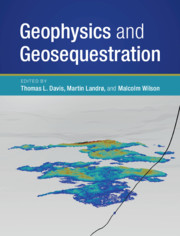Book contents
- Geophysics and Geosequestration
- Geophysics and Geosequestration
- Copyright page
- Contents
- Contributors
- Preface
- Acknowledgments
- Abbreviations
- Part I Introduction
- Part II Geophysical Techniques
- Chapter 4 Rock Physics of CO2 Storage Monitoring in Porous Media
- Chapter 5 Multicomponent Seismic Monitoring
- Chapter 6 Monitoring the Deformation Associated with the Geological Storage of CO2
- Chapter 7 Gravity
- Chapter 8 Estimating Saturation and Density Changes Caused by CO2 Injection at Sleipner
- Chapter 9 Electrical and Electromagnetic Methods
- Chapter 10 Microseismic Imaging of CO2 Injection
- Chapter 11 Well Logging
- Part III Case Studies
- Part IV Summary
- Index
- References
Chapter 7 - Gravity
Surface and Borehole
from Part II - Geophysical Techniques
Published online by Cambridge University Press: 19 April 2019
- Geophysics and Geosequestration
- Geophysics and Geosequestration
- Copyright page
- Contents
- Contributors
- Preface
- Acknowledgments
- Abbreviations
- Part I Introduction
- Part II Geophysical Techniques
- Chapter 4 Rock Physics of CO2 Storage Monitoring in Porous Media
- Chapter 5 Multicomponent Seismic Monitoring
- Chapter 6 Monitoring the Deformation Associated with the Geological Storage of CO2
- Chapter 7 Gravity
- Chapter 8 Estimating Saturation and Density Changes Caused by CO2 Injection at Sleipner
- Chapter 9 Electrical and Electromagnetic Methods
- Chapter 10 Microseismic Imaging of CO2 Injection
- Chapter 11 Well Logging
- Part III Case Studies
- Part IV Summary
- Index
- References
- Type
- Chapter
- Information
- Geophysics and Geosequestration , pp. 115 - 133Publisher: Cambridge University PressPrint publication year: 2019



